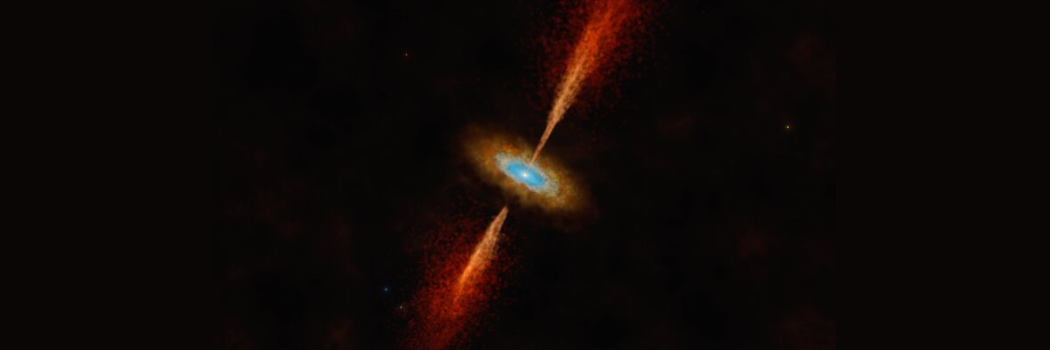Astronomers detect first extragalactic star-forming disc outside of the Milky Way

An international team of astronomers led by our world-class Physics department has reported the first detection of a rotating disc structure around a forming high-mass star outside of our Milky Way in another galaxy.
The disc surrounds a young massive star located in a stellar nursery called N180, residing in a neighbouring dwarf galaxy called the Large Magellanic Cloud.
Most distant disc ever to be spotted
Using the Atacama Large Millimeter/submillimeter Array (ALMA) in Chile, researchers observed motions in gas around a young stellar object in the Large Magellanic Cloud consistent with a Keplerian accretion disc - the kind that feeds the growth of stars through infalling material.
At a distance of 163,000 light years from Earth, this is the most distant disc around a massive star ever to be directly detected.
Evidence of star formation
As matter falls towards a growing star, conservation of angular momentum causes it to flatten into a spinning protoplanetary disc.
By detecting differences in rotational velocities within the disc, the researchers found clear evidence of its Keplerian nature - the smoking gun indicating ongoing star formation.
Glimpse into the normally hidden process
Massive stars form more quickly and live shorter lives than stars like our Sun.
They are typically enshrouded by thick dusty envelopes that obscure the protostellar discs surrounding them.
But the low metal content of the Large Magellanic Cloud seems to make this disc more optically visible.
While this extragalactic disc shares many familiar traits with those in the Milky Way, some intriguing differences also emerge, likely linked to the lower metal abundance.
The detection significantly improves prospects for locating more such disks around distant massive stars using ALMA and other next-generation telescopes like the planned Next Generation Very Large Array (ngVLA).
Picture - Artist’s impression of the disc and jet in the young star system HH 1177 (European Southern Observatory).
Find out more
- Learn more about the work of Dr Anna McLeod.
- Read the full paper published in Nature.
- Interested in studying at Durham? Explore our undergraduate and postgraduate courses.
Our Department of Physics is a thriving centre for research and education. Ranked 2nd in the UK by The Guardian University Guide 2023 and in the World Top 100 in the QS World University Rankings by Subject 2023, we are proud to deliver a teaching and learning experience for students which closely aligns with the research-intensive values and practices of the University.
Feeling inspired? Visit our Physics webpages to learn more about our postgraduate and undergraduate programmes.


/prod01/prodbucket01/media/durham-university/departments-/physics/teaching-labs/VT2A9034-1998X733.jpeg)
